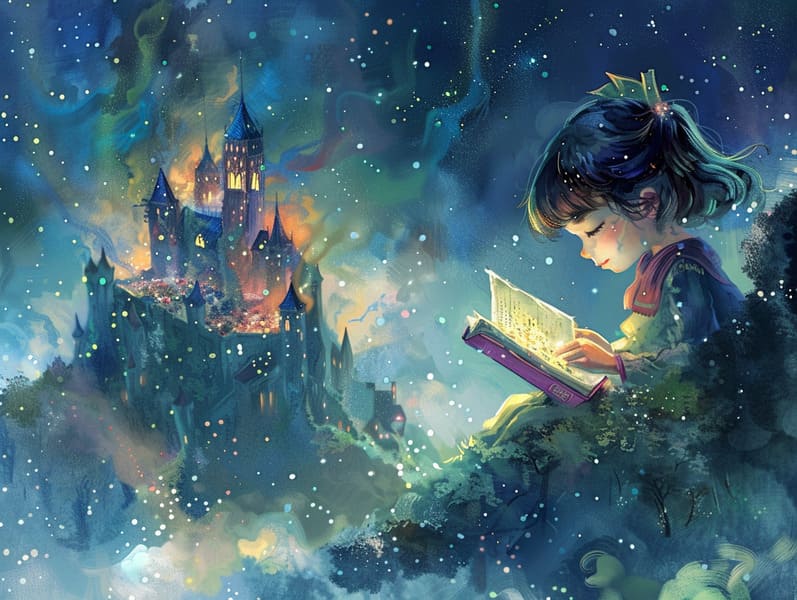The Genesis of Classic Fairy Tales with Its Steadfast Grace.

Timeless fairy tales have legendary status. These narratives have been transmitted from one generation to the next centuries before they were ever documented. They arose from a variety of cultures, including Eastern traditions. They were initially conveyed among older generations, often carrying themes and messages aligned with the societal norms and beliefs of the time.
The renowned Brothers Grimm, Jacob and Wilhelm (the Grimm brothers), were among the first to collect many of these beloved fairy tales. Their volume, "Grimm's Fairy Stories," included classics like "Cinderella," "Hansel and Grethel," and "Schneewittchen," which have since become cornerstones in the world of timeless fairy tales. Similarly, Hans Christian Andersen's fanciful narratives, such as "The Little Mermaid," and "The Story of the Ugly Duckling," have gained the love worldwide, solidifying their place in the pantheon of classic fairy tales.
Though they are old, fairy tales remain as important as ever, especially as nighttime stories for kids. These delightful tales are now available in different formats, including vibrantly illustrated books, enchanting animations, and digital fairy tales.
Their continued relevance can be linked to several magical reasons:
Key Lessons: Classic fairy tales often present important moral lessons. Stories like "The Tale of the Boy Who Cried Wolf" teach the benefit of integrity, while "The Tortoise and the Hare" emphasize the benefits of steadfastness and modesty. These tales offer little ones clear distinctions between good and bad, forming their moral compass in a tender yet lasting way.
Warmth and Understanding: Traditional fairy tales frequently portray heroines facing struggles and tests, inciting children to comprehend with their struggles and encourage their triumphs. For instance, "The Story of Beauty and the Beast" points out the significance of looking past the exterior to comprehend the true nature of a person, advancing sympathy and insight.
Cultural Awareness: Many traditional fairy tales are rich in the cultural contexts from which they emerged. Engaging with these stories can provide captivating looks into different heritages, building a sense of global insight and appreciation.
Creativity and Fantasy: The imaginative elements in ancient fairy tales—enchanted lands—motivate children’s creative minds. These stories lead readers to enchanted realms, triggering creative thinking and a sense of amazement that endures a lifetime.
Traditional fairy tales are not only fascinating but also teaching. They serve as alluring tools in developing various cognitive and affective skills in young ones. When classic fairy tales are read aloud, they foster language acquisition by showing new word meanings and complicated sentence structures. This practice also advances auditory perception and attention span, as young readers stay focused, excited to see what happens next.
Furthermore, contemplating the themes and characters of timeless fairy tales can enhance evaluative skills and thought processes. Little ones are guided to discover patterns, forecast, and comprehend cause and effect. These analyses also promote the young utter their thoughts and feelings, advancing their emotional intelligence.
In today’s modern era, the abundance of free fairy tales online has made these narratives more obtainable than ever. Internet resources and apps offer comprehensive collections of famous fairy tales that can be enjoyed or listened through anytime, anywhere. Fairy tales read out loud are particularly well-received, making available an immersive method for the young to appreciate these spellbinding stories. Narrated books and narrated videos guide characters and settings to life, often accompanied by whimsical melodies and soundtracks that heighten the narrative experience.
The unending appeal of ancient fairy tales lies in their ability to change to changing times while staying true to their core values. Contemporary renditions of these fairy tales often show more inclusive figures and modern settings, making them accessible to today’s audience. However, the main ideas of spirit, benevolence, and fairness remain unchanged, continuing to resonate with children of all ages.
Ancient fairy tales also offer a sense of comfort and predictability. They give a orderly narrative check it out with a definite beginning, middle, and end, often closing with the termination of conflicts and the triumph of good over evil. This foreseeability can be easing for young readers, making known a sense of firmness in an dynamic world.
Timeless fairy tales continue to spellbind and train new generations, maintaining their elegance and impact in modern society. As children's night stories, they introduce a perfect blend of fascination and comprehension, aiding moral values, empathy, and creativity. The accessibility of digital storybooks and the well-received status of fairy tales voiced promise that these ancient stories remain within reach to new generations.
By preserving and releasing these narratives, we continue to venerate the rich tapestry of mythology and cultural heritage. Whether you are viewing a vibrantly illustrated book, accessing a web collection, or listening through an audiobook, the appeal of famous fairy tales is always within reach. These stories illustrate of the persistent ability of stories and its ability to tie us across time and space.
Whether you are enjoying a colorful picture book, experiencing a virtual library, or hearing an narrated book, the enchantment of children's fairy tales is always within reach.
These narratives highlight of the continued impact of narratives and its ability to bring us together across eras and regions, weaving a spell that charms and informs alike.